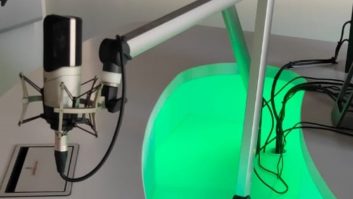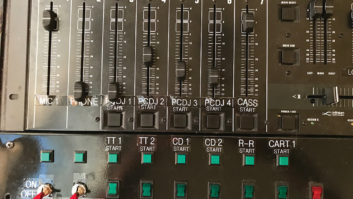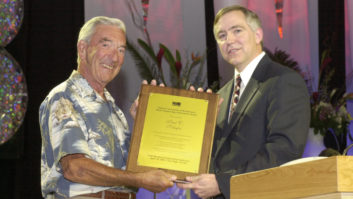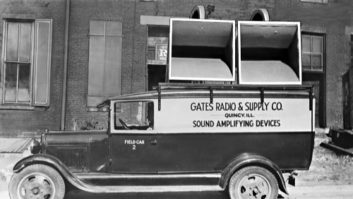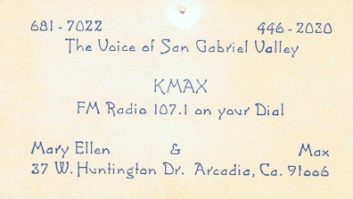Section 73.1400 of the commission’s rules is titled “Transmission System Monitoring and Control.”
Contrary to the rules that existed in ol’ Dad’s day — anybody remember hourly meter readings? — the requirements now are, if anything, a bit vague. For example, paragraph (a),(4), states that “in the case of remote control … operation, not every station parameter need be monitored or controlled if the licensee has good reason to believe that its stability is so great that its monitoring and control are unnecessary.”
Well, fine. But then again, one man’s “good reason” might be another man’s (or inspector’s) idea of sheer folly.
What, then, to monitor? Transmitter manufacturers have long supplied samples of plate voltage and current, and sometimes, forward power to the remote control interface terminals, but little else. All stations used to employ a remote frequency meter to monitor the carrier frequency; but PLL (phase-locked-loop) and more recently digital clocking (including GPS sync) have rendered that parameter one of the ones that we can all have “good reason” to believe will stay put.

The author keeps an eye on the 30 kW transmitter at 106.5 ‘The Shark.’
Gimme the works
For my part I like to load it up. This is easy to do, thanks to digital control, voice response and the Internet. They have combined to help radio reinvent the transmitter remote control.
Far from the ponderous remotes of old, with stepping relays and analog circuitry, modern remote controls essentially are foolproof. As a bonus, they have followed along with other computers in conforming to Moore’s Law. In other words, they are several orders of magnitude more powerful than 30 years ago but cost way less, in inflation-adjusted dollars.
For example, all of the remotes I looked at when building our new FM have a built-in LAN port, a Web browser and a USB port for direct link to a local computer.
Since our site has a broadband connection, I took an unused laptop and linked it directly to the remote.
Using LogMeIn (there are other verisons of this Web-based service), I can access the laptop easily and look at the GUI of the remote control. The software app allows easy access for setting multiple alarm modes on each channel, logging capability and POTS, cell or e-mail alerting modes.
The GUI (Graphical User Interface, for those unschooled in the dark art of IT) displays nifty representations of analog meters, which I prefer to digital readouts. The Web interface also is nice, since it saves me the cost of a landline to the site.
A picture is worth a thousand readings
The remote access laptop adds unrelated, but valuable, benefits.
We have loaded Adobe files of the manuals for every piece of equipment at the site on it. No more shelves of dilapidated books with spilled coffee stains on them!
In a fit of techno-overkill I also added a webcam to the computer, one that zooms, pans and tilts. What’s the pressure in the transmission line? Well, I’ll just log in, zoom the camera in on the nitrogen guage and check it out as I sit at my kitchen table in my sweats with a cup of coffee (which, as noted above, never, ever spills on my tech manuals).
For 20 bucks I bought a motion detector and connected it to a status alarm on the remote. If it triggers, I can log in to the laptop with my smartphone and see what’s up. If someone breaks in, I can have the webcam record and upload the whole episode, at least until they grab the laptop (which is more likely to disappear than the 1,500-pound HV supply).
In a bigger sense, it is beneficial to be able to “look” at the overall transmitter.
The solid-state IPAs in my rig have front-panel status lights. So does the remote control itself, along with exciter and several other boxes. No way to tie all of that into a remote control, but with the webcam, monitoring them in real time is simple. Hang some colored nylon strips on the HVAC vent and you can tell when the blower is running, even if the status of the compressor is unknown. The list of parameters capable of beng monitored with a new style remote is limited only by the effort you are willing to devote to figuring out how to interface it.
What about the basics? Do you really need to pan and zoom like some out-of-work news photographer looking for the next big money shot? Or do you just need to monitor the minimums: plate current, plate voltage, forward power and call it a day.
It turns out that even if you just want plain vanilla, current technology remote controls with autologging add to that experience, too.
What’s trending
Automatic logging allows the alert engineer to see something more important than an instantaneous reading: the trend of things.
I got a lesson in trends 40 years ago when I lived in Las Vegas. I was walking through a casino and saw a guy playing with $100 chips. He was laying down five “blacks” at a time, $500 a bet, which was a ton of money at the time.
He had a crowd rooting him on and I commented to the guy next to me that it was unbelievable; the guy had won more than $3,000 just in the few minutes I had been standing there. The guy I was chatting with looked back at me and said, “Yeah, he’s only about $12,000 down now.”
Like the blackjack player, you never want to be on the wrong side of a trend with a transmitter and be caught unaware.
Autologging can check it all: building temp, outside air temp, every important meter reading … essentially anything you want to take the time to setup. By reviewing that file regularly, you can catch things that might look fine by just taking a snapshot once in a while but might not look so benign once the trend line is considered.
Back in the day, all transmitters were manned whenever they were on the air. This was not only a regulation, but also made sense from a operational standpoint, since transmitters of that time (and the tubes that powered them) had a disturbing tendency to drift around both in terms of frequency and power. Modern transmitters, on the other hand, are incredibly reliable.
Still, even the newest solid-state Cadillac model is made up of thousands of individual parts, each having a defined mean time between failure. And many of those parts can cause the money machine to shut down completely.
Investing in a current technology remote control and taking the time to implement all of its functionality fully is good (not to mention cheap) insurance against an unplanned outage.
Among Jim Withers’ many past contributions to Radio World is his Christmas poem “Twas the Night at the Site.”

